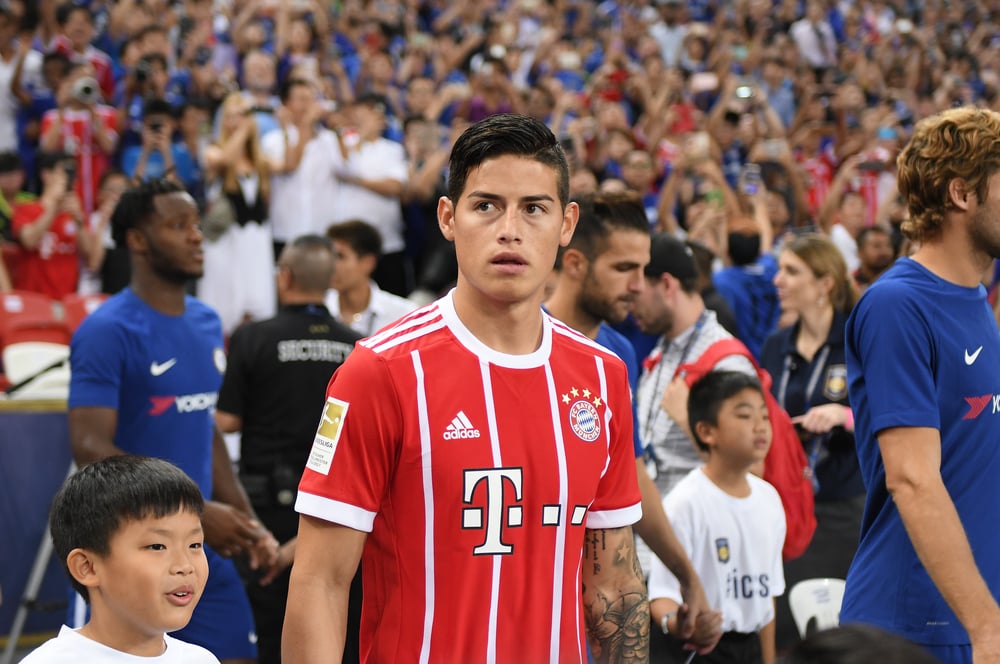Non-fungible tokens (NFTs) have quickly become established as a new means of fan engagement in the sporting space, with various high-profile teams and organisations rolling out their own digital collectibles.
As NFTs begin to skyrocket with teams and leagues testing the waters of the innovative collectibles, Insider Sport breaks down the new means of revenue with the help of Amrit Kumar, President and Chief Scientific Officer at Zilliqa.
IS: Do you want to start by providing a rundown of what exactly NFTs are and the value they provide?
AK: NFTs are basically digital assets that sit on a blockchain, and the benefit of creating this blockchain is that for one, you can know who created the NFT and who is the owner of that NFT and at the same time, every time the NFT gets transferred from one person to another one, you can actually have that trail and that trail is established by the blockchain.
It’s not possible for someone to come out and say ‘here’s my NFT and that NFT I bought from someone else’, because that could be verified very easily by the underlying blockchain. That’s kind of the main benefit of NFTs, these are digital assets which are non-fungible, so these are unique. They have a certain value associated with it and they are backed by blockchain so you can trace and track the flow of that token across time.

IS: Once an NFT has been purchased, is the content of that token no longer available to access on the internet?
AK: Let’s say for example you have a video or a painting or a real estate for example, and you want to convert that and tokenise that as an NTF, so what you’d do in the case of a digital painting, then you host that painting somewhere – it could be on a digitalised storage provider or it could be even on centralised service providers like Amazon, for example, so you could host that video on certain servers.
And then you have a URL, so you can create a URL where this video is hosted, and when you’re creating the NFTs, we are minting that NFT on the platform and on the blockchain platform, and you basically link that URL in that token, so that when people buy and sell they know that the actual physical thing or that digital thing that’s sitting behind that NFT is actually stored at that address for that URL.
Fo example, if you are tokenising physical assets like real estate then is going to be slightly different because you can’t just say that ‘okay, here’s a link where you can find your apartment’, but you basically have to say that, ‘if you buy this NFT then you’re going to get access or you’re going to get the ownership of the underlying asset’, which is going to be the apartment, the building or the underlying physical painting.
IS: What kind of benefits does that provide to athletes, teams and leagues?
AK: It applies to not just sports personalities but any celebrity for example. So, imagine I am a well known football player and I have a huge fan base of a million users – a million followers on Twitter and Instagram – now I’d like to monetise my own personality and my own worth using that fan base that I have.
The way sports players do it is they contact an agency, for example, and this marketing agency then contacts certain products and then they shoot a video and they do advertising for that company and that’s how they make money.
The idea behind NFT’s and monetising yourself is can you actually change and remove some of those middlemen and directly serve your own fan base. For example, you could shoot a video, like a video to wish happy birthday to your favourite fan, and you can sell that NFT to your fan base directly. And that can happen because you have marketplaces which are developed on blockchain, on which you can just take your NFT, put that on sale and then anyone can buy that NFT from you.
You could even do auctions for your NFTs as well so you don’t even need auction houses per se – you could literally go to a marketplace, build on a decentralised network and then auction off your NFT as well. This way, what you’re doing is you’re sort of bypassing auction houses, bypassing your managers, your marketing personalities and agents, and have a direct connection with your fan base, and that’s very powerful.
IS: You’ve recently collaborated with the likes of Everton FC and well known footballers Diego Costa and James Rodriguez. How did that come about?
AK: Very recently, we’ve been talking to a party in Portugal called Polaris, and they are managing quite a few well known football players. The idea was that these football players will produce content and will shoot content for their fan base. You may have seen NBA Top Shot where highlights of certain matches were taken and they were sold as cards here. The idea was different where we wanted to actually shoot very specific videos for the fans so it was done in collaboration with the players themselves.
If you go and buy these NTFs, you have access to certain things. For example, you would have a digital signature from the player and you could even win a signed jersey by the player – these are the sort of physical utility that also gets added to our digital NFTs. You can even win the possibility to have a one-on-one session with the player, so these are some of the benefits that we are giving to people who buy those NFTs. All of this is specially for these entities so it’s not something that can be recycled or rehashed.
IS: How significant were those deals for Zilliqa, working with some of the biggest international stars and Premier League clubs?
AK: Working with big names is always challenging so we had to find partners who would have the right contacts. Overall, over two days or three days we have been able to sell 1.2 million to 1.3 million worth of NFTs already. This shows that there’s a demand in the market for people who want to get access to exclusive content made by celebrities for their fans.
It was a huge deal for us and we are looking forward to extending this into different other formats as well, so it could be players from other sports like golf and racing and whatnot. But the idea is to be able to bring these players and sports personalities closer to the fan base because fans today need more and more access and direct access to the players and sports celebrities. I think NFTs are a good way to do that.
IS: Why do you think NFTs have grown in popularity in the sporting space of late?
AK: I think COVID has changed certain scenarios as well. Previously, people could go to auction houses and buy things and people could go to matches and now things are opening up but not possible right now. This means that a lot of things have moved to digital from physical now and that’s kind of why one of the reasons why people are providing ways to monetise themselves or creating NFTs have been having a blessing in disguise.
IS: And from a fan engagement stance, how can NFTs elevate clubs’ audiences and expose them to new fans?
AK: One of the problems that people have been facing a lot is sometimes people have access to certain coupons and access to rights, and those access rights are not always transferable. The good thing now with NTs is the access and privileges that some people have within a certain fan base and clubs, now they can be transferable so you can actually buy those assets on a secondary marketplace.
If after a match, in a post-match ceremony, you can invite certain fans who have earned certain rights through voting in different things and now they have access to these assets, and therefore the possibility of those events. Now, this person who owns that privilege but also sort of tokenised into NFT and then could sell it to other people, which was previously very difficult to do. So, a lot of engagement that previously was not possible now becomes possible because of the fact that you can transfer some of these assets and privileges through entities.
IS: How can NFTs continue to grow and remain relevant in the sporting world?
AK: Obviously, we are still in a very experimental stage where people are still trying to figure out what works and what doesn’t. It’s quite possible that something that looks very good right now may not work in six months. One thing, of course, which is very clear is that this royalty part is very valuable to people. You talk to any celebrity today and they would like to see and they would like to know that, ‘oh, I don’t just want to sell my NFTs but I want to make sure that these NFTs create a sustainable revenue stream for me’. And that’s something that has certainly become very viable for people.
The other thing where I feel the trend is going to go is that some of these NFTs are very expensive. It could range from $1,000 and some NFTs have been very expensive to a point where they have been sold for $16 million, as well. If you have NFTs that are so expensive, it becomes very difficult for common man and normal person or average person to buy those. There is a trend that’s coming up where you can tokenise NFTs even further, so instead of having one apartment, you could divide that apartment to smaller rooms and you can actually sell individual rooms. You can apply that to personalities so if a sports person does a video for the fan base, then you could actually own a portion of that video, not the entire video. So, even if you have $100 and if you want to put your $100 to work, you could still own a certain piece of that bigger pie, which was previously not possible.























